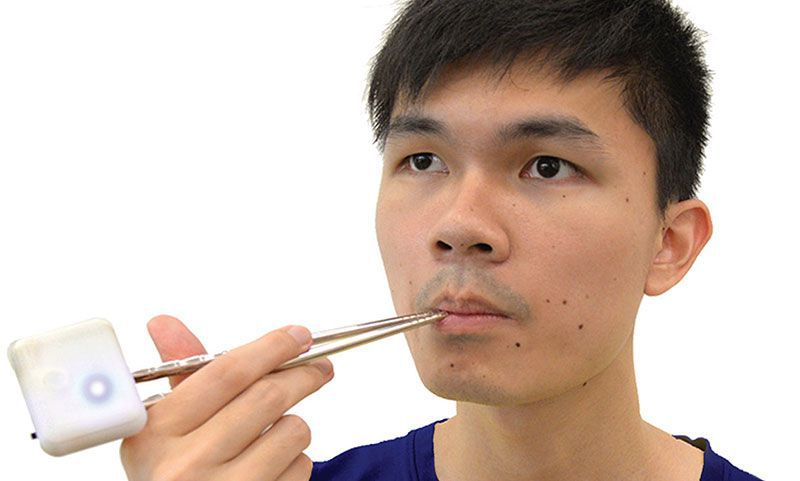 It’s hard not to think of Nimesha Ranasinghe as a digital age Willy Wonka. But his lab, at the University of Maine, isn’t full of chocolate, and it doesn’t smell like cotton candy. Instead, the materials of the engineer’s work are electrodes and wires, LEDs and pH sensors.
It’s hard not to think of Nimesha Ranasinghe as a digital age Willy Wonka. But his lab, at the University of Maine, isn’t full of chocolate, and it doesn’t smell like cotton candy. Instead, the materials of the engineer’s work are electrodes and wires, LEDs and pH sensors.
Ranasinghe is one of the world’s leading researchers on electric taste simulation—using electronic tools to fool the tongue into experiencing tastes that aren’t there. Use his electrode-embedded chopsticks to eat creamy, salty mashed potatoes. Except they’re not salted at all—the taste of saltiness comes entirely from the current in the chopsticks. Sip tart yellow lemonade from a tumbler. It’s actually not lemonade at all, but plain water colored yellow with an LED, the sourness a result of an electric current running through the cup. Lick a “Virtual Lollipop,” and discover what taste your particular biochemical makeup senses—it might be sour, sweet, salty or even bitter. In any case, there’s no actual food involved, only silver electrodes.
“I like food,” Ranasinghe says. “But the controllability of taste is what I’m really interested and excited about.”
Ranasinghe’s research involves controlling taste sensations through electricity, color, heat and scent. He envisions a future where simulated tastes could be part of virtual or augmented reality experiences, another step towards comprehensive faux reality.
Read more: https://www.smithsonianmag.com/innovation/using-electric-currents-to-fool-ourselves-into-tasting-something-were-not-180970005/#seki2l0wFY0iF23y.99
Give the gift of Smithsonian magazine for only $12! http://bit.ly/1cGUiGv
Follow us: @SmithsonianMag on Twitter
By Emily Matchar
